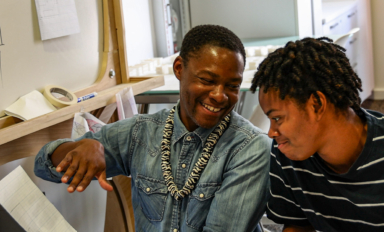The move to automation was well underway prior to the pandemic—it just looked a lot different. The bleeding-edge tech of the time focused on efficiency and on-demand availability. Then came COVID-19. The tiny virus brought big changes—both hastening the rise of automation in interior design and also altering its trajectory. Now one of the technology’s big selling points is safety and how it can reduce unnecessary person-to-person encounters and contact with public surfaces.
“Everyone wants to limit physical interactions right now, and automation helps that happen,” says Margi Kaminski co-director of healthcare interiors at CannonDesign, Chicago. Since the outbreak, her health system clients have leaned heavily into the tech, adding features like automated registration kiosks and body-scan booths in primary-care clinics.
The push to integrate automation isn’t limited to healthcare, of course. Designers across industries are rushing to incorporate touchless elements, from automatic doors in retail stores and mobile phone-activated keys that open hotel rooms to voice-activated elevators and hands-free light switches in office buildings. All of this is changing user behavior accordingly: Contactless payments have increased by 69% since January 2020, according to the U.S. National Retail Federation.
While COVID gets credit for the shift in emphasis, it merely added fuel to automation’s ascent. Going back to a 2018 McKinsey study, more than half of companies across the globe reported they had either implemented or piloted an automation project. And the technology is becoming increasingly ubiquitous across a range of physical spaces, from self-driving cars to office buildings whose walls and window shades realign themselves several times a day to maximize energy efficiency. Government leaders in Saudi Arabia are even developing a $500 billion automated city dubbed Neom.







 Home
Home




























































































































































































































































































































